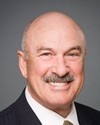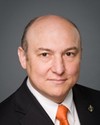Okay.
In essence, the chain of command is the key. You're quite familiar, I think, with the way we maintain the chain of command at unit levels and with the responsibilities you provide as direction to a unit commanding officer.
As a formation commander, I have units, I have commanding officers, I have training opportunities. We will deploy capabilities, measure capabilities and responsiveness, and then essentially ensure and maintain that level of operational capability as required.
To give you an example, Joint Signal Regiment deployed to Petawawa in the last month. They will have established capability to see what their field training standards are, what their level of deployability is. At the same time, they measure back to me and tell me that they have a lot of their people and equipment deployed right now.
So I get a constant feedback measure as an operational commander to ensure that I know what levels and standards of capability we have in place, based on the responsiveness that I need. Again, in some functional areas—and this may not be as self-evident—I need to have contracting expertise that is ready to go and to deploy out the door. I need to rely on Assistant Deputy Minister (Materiel) and procurement services in addition to military contract expertise to have people ready—and this is more a case of individual readiness—so that if there is a Haiti mission or if we are providing a search and rescue support to Jamaica, I'm able to augment that initial task force and get it out the door.
So I will maintain a certain level of capability, and that is a technical competency in addition to an individual fitness capability for deployments.





